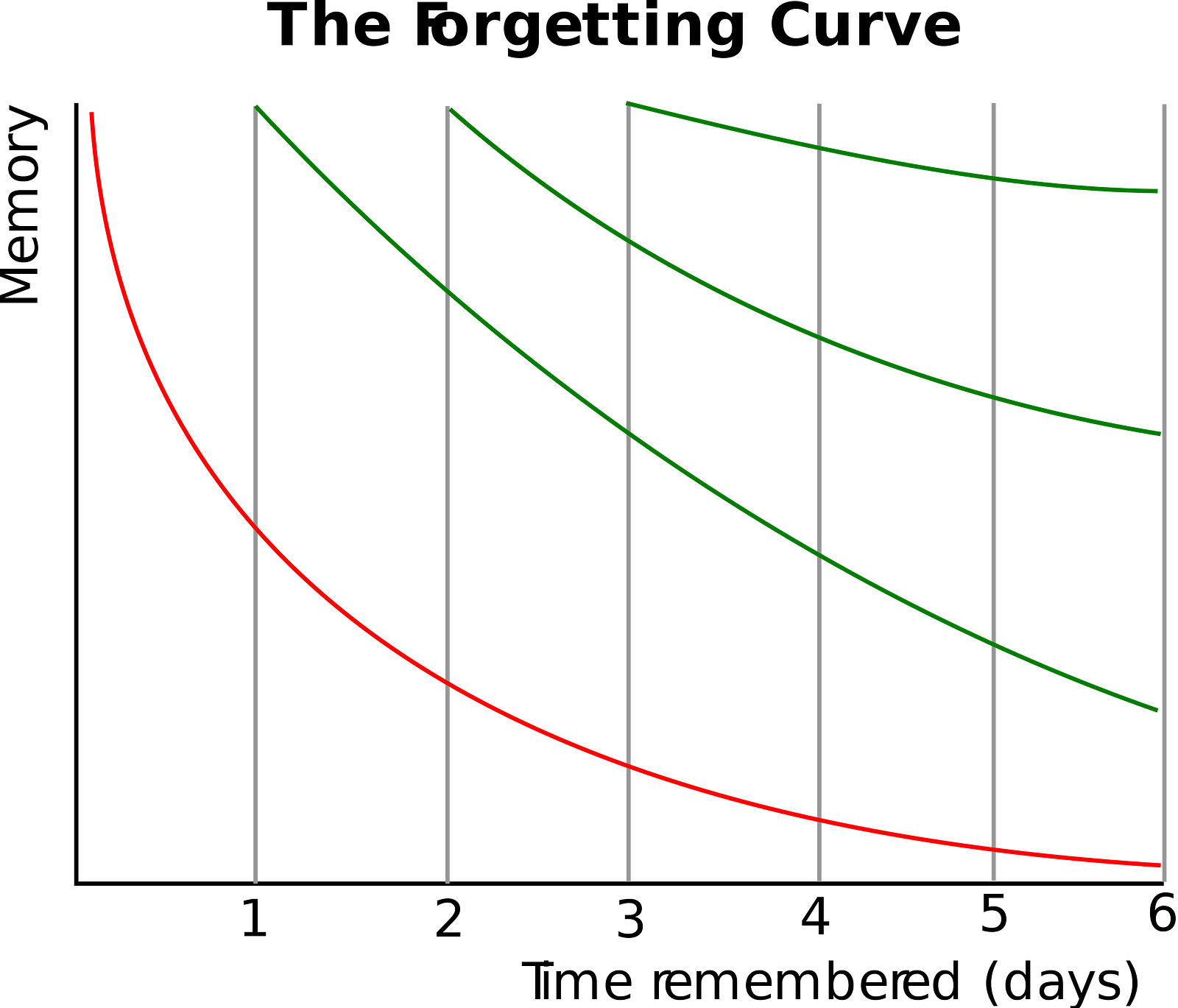How to Learn Anything Faster? 3 Step Brain Hack Guide
The world is changing quickly, you must learn faster to keep up
If you are not keeping up with the times, sadly you’re falling behind
2,500,000,000,000,000,000 or in plain English, 2.5 quintillion. That is how many bytes of data we are creating every day.
That is 2.5 million times a terabyte! One terabyte of storage is roughly as much information as 1,300 filing cabinets full of paper. Good thing we don’t use those anymore…
We are generating an unprecedented volume of data every day. In fact, in the last 2 years alone 90% of all the data ever created was produced.
Machine learning and AI can help us navigate in the vast sea of data. However, in this article, we will be discussing how you as an individual can keep up with the pace of new information.
Master the 80/20 rule
The 80/20 rule (or the Pareto’s principle) states that 80% of the value comes from 20% of the most important components.
For example: If you want to learn a new language; you have to learn new vocabulary. The English language has around 470,000 words according to Merriam-Webster.
However, according to some studies, by knowing the most common 1,000 words in English, you can achieve a comprehension rate of 88%.
That’s incredible. This suggests that by learning 1/470 of the total words in English, you will be able to participate in 88% of conversations. Talk about a good ROI!
You can easily learn 1,000 words in two months if you really wanted to. (Roughly 17 words a day with spaced repetition, I will mention soon).
You can use this principle in any field. The main idea is that by focusing on the most important 20% you are saving yourself 80% of busywork.
Tap into the power of spaced repetition
If you are anything like me or 90% of the population, you crammed like crazy before your midterm exams.
Astonishing as it might be, even if you got A’s, two days later you had no idea how you did the test. The topics seem to be wiped out of your brain.
Fast forward to finals week, and you don’t remember a single topic from the past. Here you are, “re-learning” the topics that you Aced before.
Sounds familiar?
One of the reasons is that you never gave your brain time to process and internalize the information.
When you learn new things, new neural pathways carrying the new information form. The more times you repeat the knowledge, the stronger this path gets.
Imagine a neural pathway like a road in the pristine woods.
First, you need to forge your way through the thick forest. The initial pass might be with a machete. It will take you days and nights to power through the forest, cutting down trees, and clearing the stones.
The second time you cross the same path, it will be much easier. Now that the thick trees are gone, all you need to do is to get rid of the weeds and some branches left from your initial pass.
The third time around, you can almost run through it because you already cleaned the path.
Since you are in the wild jungle, if you don’t use the path for a couple of months, the plants will grow back. Soon enough, you will find that the path is starting to close up. In years, even disappear.
However, if you were to cross the path every once in a while, clearing out the new growing plants, you will always have a smooth road.
Outside of the analogy, this means that by spacing out repetition, you are able to keep the information fresh in your brain. You don’t have to spend time re-learning the material all over again which saves you a lot of time in the long run.
Master the Forgetting Curve
The forgetting curve is an approximation of how much information will be lost in a certain timeframe if the information is not repeated.
Statistically speaking once you learn a new concept after just 20 minutes you will forget 40% of what you just learned. And in 24 hours you will remember only 25% of what you initially learned.
This might seem like an utter waste of energy and time. But you can use this curve to your advantage.

On the graph, the verticle axis represents how much of what you learned is retained. The horizontal axis represents elapsed time since you last tried to recall the information or repeated it.
The red line represents the initial forgetting curve (If you do no repetitions at all) and the green ones represent lines (almost resetting) with each repetition.
Notice that the more you repeat, the flatter the forgetting curve gets. This means that with enough repetitions you will, in theory (as long as you are reminded of it once in a while), remember the concept as long as you wish.
The forgetting curve relates to spaced repetition. The most advised times to do your repetitions are as follows:
- 1st repetition: 5 minutes after the initial learning
- 2nd repetition: 1 hour
- 3rd repetition: A day or 24 hours
- 4th repetition: 3 days
- 5th repetition: 7 days or a week
- 6th repetition: 3 weeks
- 7th repetition: 3 months
After the 3 months mark, you are done. The information you learned is now like the forged path mentioned above. You only need to maintain it every once in a while. It takes just 7 well-planned repetitions to engrave information into your memory.
Note: Notice that the frequency of repetition gets significantly less as you do more repetitions.
Read the summary first
Whether you are reading a book, studying chapters for your college exams, or researching for your killer presentation, start by reading the summaries.
Summaries generally focus on the important stuff (shout out to 80/20 principle).
Which means that you can locate which topics to focus and what topics to ignore.
Once you are done with the summary, your brain is primed for learning. Meaning that you are somewhat familiar with the topic and at least know what to expect.
After you read the summary, your job is to dive deeper into what you want to learn.
Another benefit of reading the summary before diving deeper is that it gives you a grand picture of how different topics relate.
Most of the time it is hard to learn because you aren’t familiar with the material at all, and you have no idea how the topics tie into each other.
However, if you know what the end goal looks like you can make more sense of the information given. Plus you will have an easier time combining the principles.
Final thoughts
In conclusion, we are producing an unimaginable amount of data every day and technology is our ally in the process. As interpreters and users of technology, you can upgrade yourself to learn faster!
Happy learning! If interested you can learn about What is a Mind Palace and how do you build one?
Check out this awesome book by Jim Kwik a memory expert

